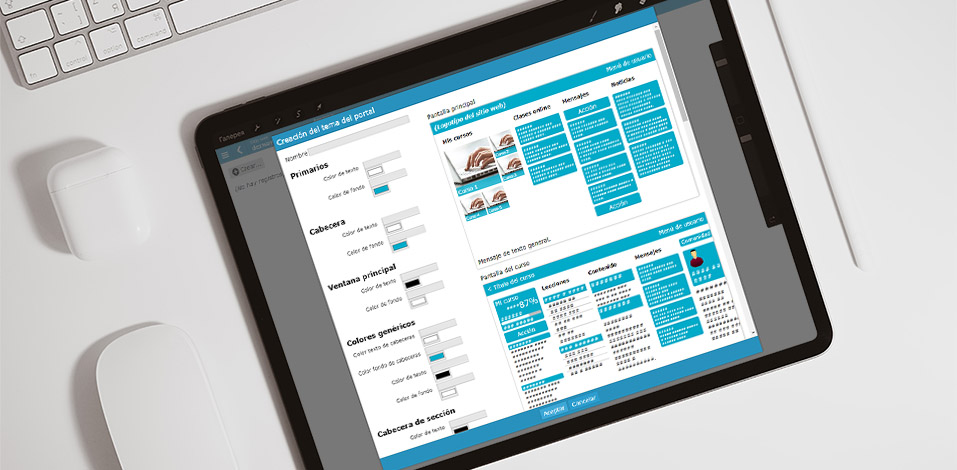In the Innovation section of the Harvard Business Review a business professor, Rita McGrath, submitted a study that proves technological innovations are growing at an exponential level; meaning, we get more and more tech oriented every year. From cellphones to software solutions, it seems as though we are now much further ahead of the previous generation as they were from their previous generation. With the speed of technological innovating at an all time high, it’s easy to feel like technology in the modern times is too fast to keep up with. Learning Management Systems (LMS) are an example of these technological innovations; they are the mecca of management system platforms and are equipped with tools and resources to facilitate even the most mundane of administrative, evaluative, or academic task. But still, they get a bad rap and a few LMS myths have started to float around.
Every business or educational entity from corporations to elementary schools should incorporate an LMS in their business practices and curriculum. Most, however, are hesitant to migrate over to a more technology based educational administration system because of a few stories they might have heard through the grapevine.
Our clients often ask us about these 5 common LMS myths
So we are here to debunk them for you.
LMS Myth 1: An LMS is hard to use, hard to install, and hard to maintain
Myth, Myth, and Myth. LMSs are technological innovations that have evolved to facilitate the lives of its users and administrators, not complicate it. Cloud-based SaaS LMSs, like CAE’s LMS, are extremely easy to use with one of the most user-friendly interfaces available on the market, easy to install and update via the cloud, and easy to manage without any prior LMS or tech knowledge required. LMS myths like these are very untrue and keep businesses from their growth potential with LMS migration.
LMS Myth 2: An LMS is an operational expense, not an investment
LMS myths usually has to do with cost. How much does an LMS cost? The answer is not as much as it will save you in the long term. You can put a price on an LMS platform, but you can’t put a price on increased staff and faculty productivity, structured and organized financial and academic control, or virtual classroom capabilities that help you increase the volume of students you reach. But you can put a price on your company’s increasing profitability as a result of these improvements.
LMS Myth 3: An LMS is exclusively for eLearning courses
E-learning courses are only a fraction of the functionalities of an LMS. LMS myths will lead people to believe these powerful platforms can simply be used to host e-learning courses when they can do so much more than they are give credit for. LMSs are designed for administering, documentation, sharing, tracking, evaluations, reporting and e-learning courses. With an LMS, administrators can assign faculty roles, easily enroll students, host structured and standardized training for new staff, and hold full control through monitoring and reporting capabilities. Instructors and learners can take e-learning courses, share important documents and resources, participate in conversation groups, and also receive regular reports of their performance against the course objectives.
LMS Myth 4: LMS administration is painful, cumbersome, and ineffective
Most business entities who don’t host or offer e-learning courses, admit that they use LMS platforms to facilitate their everyday and mundane administrative tasks. There are several admin tasks that are made much easier through the use of an LMS such as the ability to effortlessly complete these tasks: Add or remove user, create a course, give limited access to managers and learners, change default settings of an LMS, alter default roles of a particular user, add extra user-profile fields, hide existing courses from learner, create course reports, create the different login/logout reports, download the user list, download grade reports for individual courses, and more.
LMS Myth 5: An LMS doesn’t meet the needs of rich interactivity, streaming video, and learner engagement
There are different levels of LMS capabilities on the market with varying functionalities, but LMSs ours have fully integrated platforms that support user-friendliness, video streaming, document sharing, and include self-guided interactions for learner engagement. Ou LMS offers the option of teaching online classes. It includes the possibility of integrating Videoconferencing via Google Meet, Zoom or Teams. LMSs are hubs for rich content, resources, and user engagement.
LMSs offer powerful management tools for not only academic tasks and courses, but also for everyday administrative tasks. LMS myths 1 through 5 are common misconceptions of LMSs that admnistrators, instructors, and learners alike believe. CAE has 40+ years of experience researching, developing, and innovating the user-friendly and powerful LMS to debunk all of these myths and offer businesses and educational institutions the best quality solutions on the market.
You may also like:


